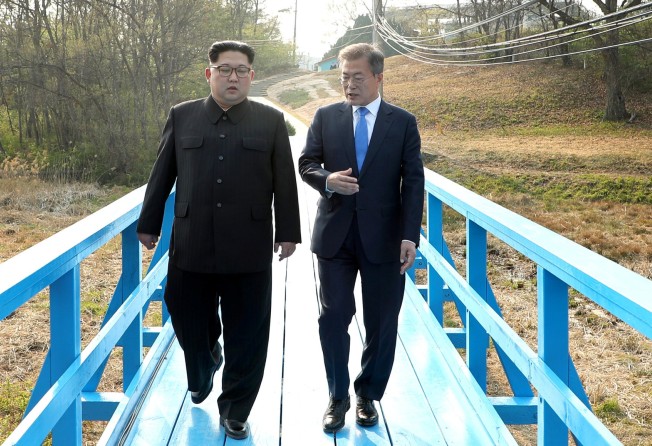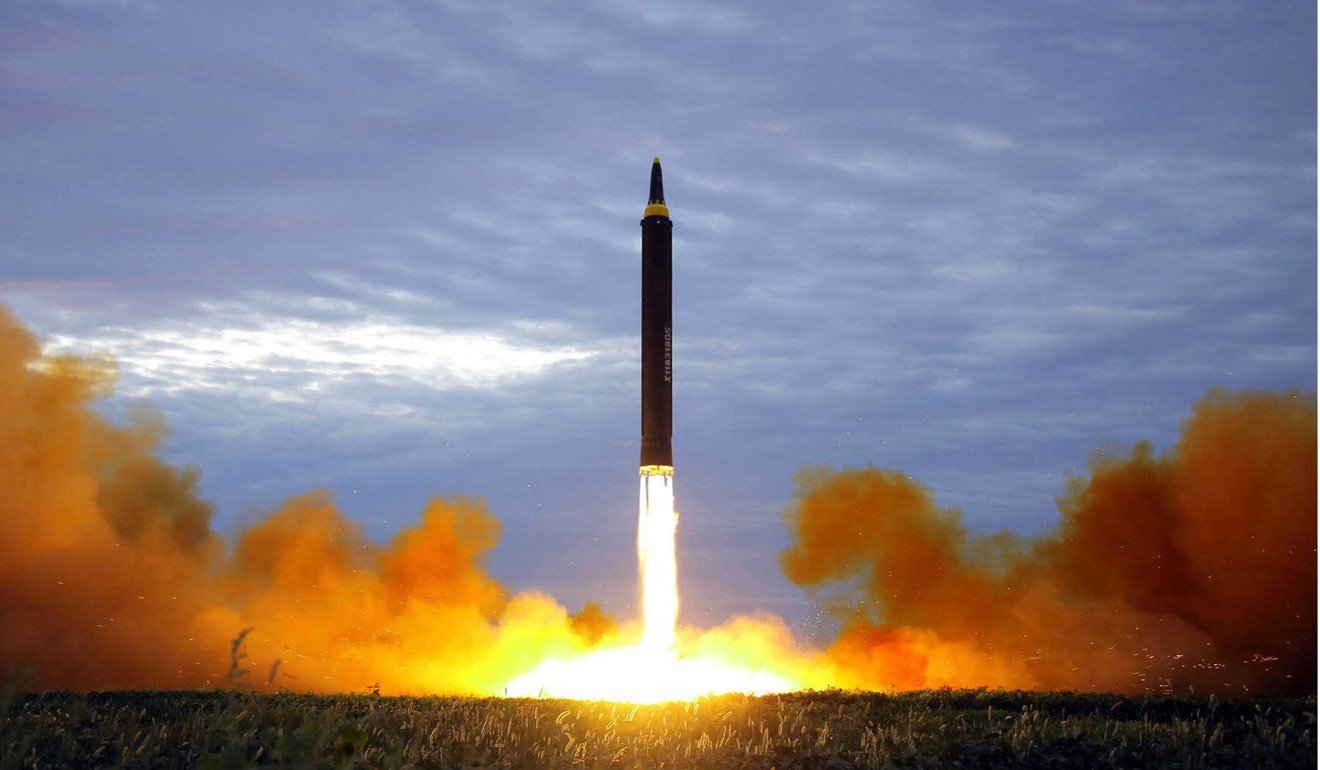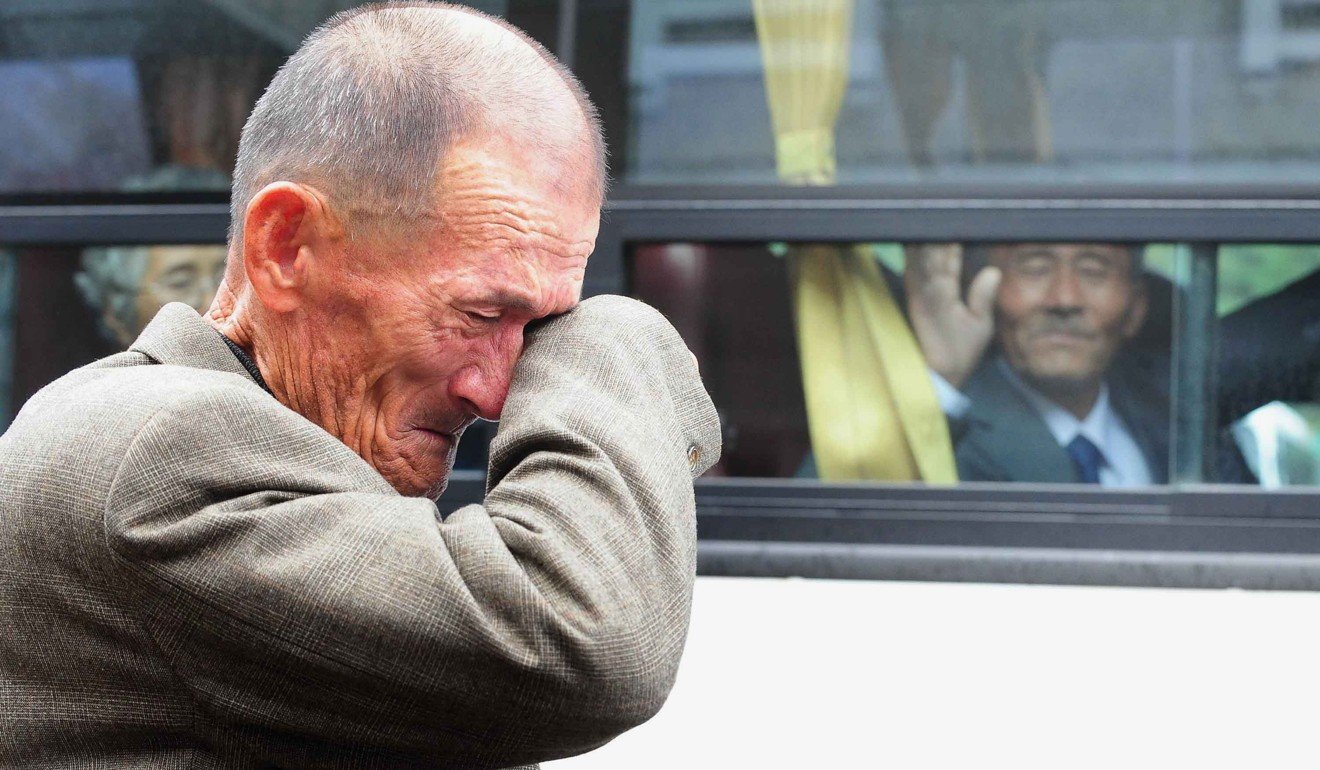Vaguely worded pledges speak volumes about challenges to peace on the Korean peninsula
Despite its vow to conclude the armistice by year’s end, the inter-Korean summit’s declaration raised questions with its failure to define ‘denuclearisation’

Unimaginable even a couple of months ago, the leaders of South and North Korea have signed a historic declaration that promises to reunify the estranged neighbours and conclude, before the end of this year, the armistice that stopped the Korean war nearly 65 years ago.
The declaration that emerged from the first inter-Korean summit in a decade included several pledges that, if realised, could indeed bring about the “new history” that North Korean leader Kim Jong-un called for as he met South Korean President Moon Jae-in at the border village of Panmunjom in the demilitarised zone on Friday.
But no time frame was given for the fulfilment of most of these promises. It was also unclear how these vows could be accomplished, aside from a pledge to hold more talks in the future.
The omissions and the vague wording spoke loudly to the tough road yet to be travelled before the vision painted in the declaration could be achieved.
A breakdown of the main ideas:
1. “Complete” denuclearisation
The declaration pledged a “nuclear-free Korean” peninsula through “complete denuclearisation”. It also pledged the two Koreas to “carry out their respective roles and responsibilities” towards the achievement of this promise and to seek the international community’s cooperation to that end.
Ahead of the summit, pundits had been watching closely to see whether North Korea would hold on to its existing nuclear weapons, even though Kim had announced that Pyongyang would not develop new ones or initiate new nuclear tests before the leaders met.
While the declaration used the term “complete denuclearisation”, it came with no timeline. More importantly, it contained no description of what, exactly, “denuclearisation” meant.

2. Ending hostilities and starting to work on a peace treaty
The two sides pledged to work together to officially end the Korean war this year. Trilateral talks between the two Koreas and the US, or four-party talks including China, are to be held to establish a permanent peace agreement, according to the declaration.
The hostilities were halted by an armistice signed nearly 65 years ago, on July 27, 1953. The declaration committed both sides to turning the armistice into a peace treaty – a move that “must not be delayed any further”.
The statement also assured that the parties would cease hostile action and reaffirmed an existing non-aggression agreement that would preclude them from using force against one another.
It also pledged to turn the tense border waters between North Korea and South Korea into “a safe fishing zone”.
“South and North Korea will make joint efforts to alleviate the acute military tension and practically eliminate the danger of war on the Korean peninsula”, according to the declaration.
That statement prompted US President Donald Trump to tweet: “Korean War to End!”
KOREAN WAR TO END! The United States, and all of its GREAT people, should be very proud of what is now taking place in Korea!
— Donald J. Trump (@realDonaldTrump) April 27, 2018
3. Unification as the ultimate goal
The declaration’s title, “Panmunjom Declaration for Peace, Prosperity and Unification of the Korean Peninsula”, plainly pointed to an ultimate goal in these inter-Korean talks: reunification.
It remains to be seen how that goal could be achieved, especially with Kim Jong-un in the picture. But Kim and Moon have agreed to take part in frequent “candid discussions” on vital issues to create momentum for the “peace, prosperity and unification” of the troubled peninsula, according to the declaration.

4. Disarmament
South and North Korea pledged to carry out disarmament in “a phased manner”.
“Phased manner” is a vague term. Making things even more opaque, the statement said disarmament would start only when the timing was right, or “as military tension is alleviated and substantial progress is made in military confidence-building”.
While North Korea’s missiles have commanded the greatest attention in this issue, it is unclear what implications a phased-in disarmament would have for the presence of US combat forces in South Korea.
5. Communication between both sides
The statement assured communication between the estranged parties would take place over an array of channels and at varying levels.
Moon would visit Pyongyang this autumn, according to the declaration. Moon and Kim also are to take part in frequent telephone calls and regular meetings, it said.
A joint liaison office with resident staff representing both sides is to be set up in the Gaeseong region in North Korea, according to the declaration.
Both militaries are to meet regularly to solve “issues that arise between them”, the declaration said.
At other levels, central, local governments and the parliament are to host joint events on dates with special meaning to Koreans. The parties also are to jointly participate in the 2018 Asian Games, the declaration said.

5. Humanitarian and economic cooperation
The statement made no mention of economic aid for North Korea. It said the neighbours would work together to improve road and railway connectivity along the eastern transport corridor, and between Seoul and Sinuiju, a North Korean city facing China’s Dandong city.
It said both sides would work through the Red Cross to organise reunions of families separated by the Korean war and to resume a family reunion programme in August.
North Korea had previously demanded that Seoul return 12 North Korean women who had worked for a restaurant in China and defected to South Korea en masse in 2016, as a prerequisite for a new round of reunions.
6. US and China’s role
The statement said that both sides would “actively pursue” trilateral meetings involving the two Koreas and the US, or quadrilateral meetings involving the two Koreas, the US and China. The aim would be to conclude the armistice before the end of this year.
Please do not forget the great help that my good friend, President Xi of China, has given to the United States, particularly at the Border of North Korea. Without him it would have been a much longer, tougher, process!
— Donald J. Trump (@realDonaldTrump) April 27, 2018
Friday’s summit set the tone for Kim’s meeting with Trump sometime in the next two months. Following the release of the statement from the inter-Korean parley, Trump tweeted his praise for President Xi Jinping, calling the Chinese leader his “good friend” and saying without Xi’s help, “it would have been a much longer, tougher process”.